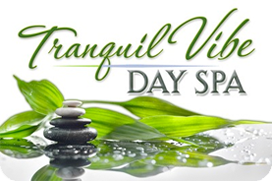Getting your first massage can be quite intimidating. The fear of the unknown and visions of poorly played out massage scenarios from movies or TV can set the wrong tone, making you feel overwhelmed or sometimes unsure if you even want to get a massage. Having just a little insight of what to expect should ease your mind and have you well on your way to a relaxing massage!
Posts Tagged ‘massage therapy’
Why massage needs to be a part of your exercise program!
March 13th, 2014 by Tranquil Vibe Day Spa
Massage your way to a better body!
How many of you know that massage can greatly improve your exercise game? Did you know that massage actually increases the blood flow to your muscles thereby increasing the delivery of oxygen, vital nutrients and amino acids to the places that need them? Massage also relaxes your muscles allowing better flexibility which in turn decreases exercise induced injury. There are a great many things that massage therapy can do for you and here is a great article from Scott Hayward to help explain some of them. Enjoy!
Read “Massage and Weight Loss” at weightloss.com.au
The history of massage therapy!
August 30th, 2013 by Tranquil Vibe Day Spa
Where and When did massage come from?
When the subject of massage is brought up, few people really understand the impact that it has had on society and the world in general. For instance, western civilization, more specifically the United States, has for the longest time, in the name of pharmaceuticals and modern medicine, pushed massage therapy to the dark corners of mysticism and skepticism. Fortunately, the pendulum has swung back to shed a positive light on massage therapy and its many benefits for people. The medical community is starting to come around to see massage as not only a complimentary service for many hospitals, but, as a stand alone treatment as well. The drug companies, it seems, will doubtfully back something that competes with their many medications. But, I digress, back to the history of massage! So, where did it all start? To be honest, no one really knows the exact start date of massage, that is because it has been around longer than anything from modern society, longer than the Statue of Liberty, London Bridge, the Egyptian Pyramids or Stonehenge! Massage therapy has been around since the beginning of mankind, many thousands of years ago. Now, as always, don’t take my word for it, see what the experts have to say!
A Brief History of Massage
By Robert Noah Calvert
Note: The late Robert Noah Calvert authored The History of Massage: An Illustrated Survey from Around the World (Healing Arts Press, 2002). He founded Massage Magazine in 1985 and served as its president until 2005, also founding the World of Massage Museum in 2000. With more than 25 years of experience as a massage therapist, publisher, researcher and educator, his work appeared in numerous publications, including Body, Mind & Spirit Magazine, Massage & Bodywork and the Journal of Higher Education. At the time of his death in April 2006, he was working on three massage-related books.
These observations on massage were submitted to ABMP by the author just a few days before his death.
Massage…is a very ancient form of treatment, so ancient that one may consider its history to be as old as that of mankind and its beginnings prehistoric.
-Dr. Emil A.G. Kleen, Massage and Medical Gymnastics, 1921.
|
A Massage History Perspective
|
Touch Part of Human Social System
The history of massage and the evolution of human touch are intertwined with human history. Since prehistoric time, touch has been an integral part of the primate social system, initially as an element of grooming behavior. During the long transition from primate grooming behavior to human contact systems, touch took on other social characteristics. As human beings evolved to develop organized civilizations, touch was transformed into a variety of behavioral modes and touch methods. Touch became more complex, eventually becoming structured manual art therapies. But before touch was formalized it was first a part of social interactions — between friends, between mother and child — as well as simply basic healing of one’s self and others.
Read the rest of this page »



